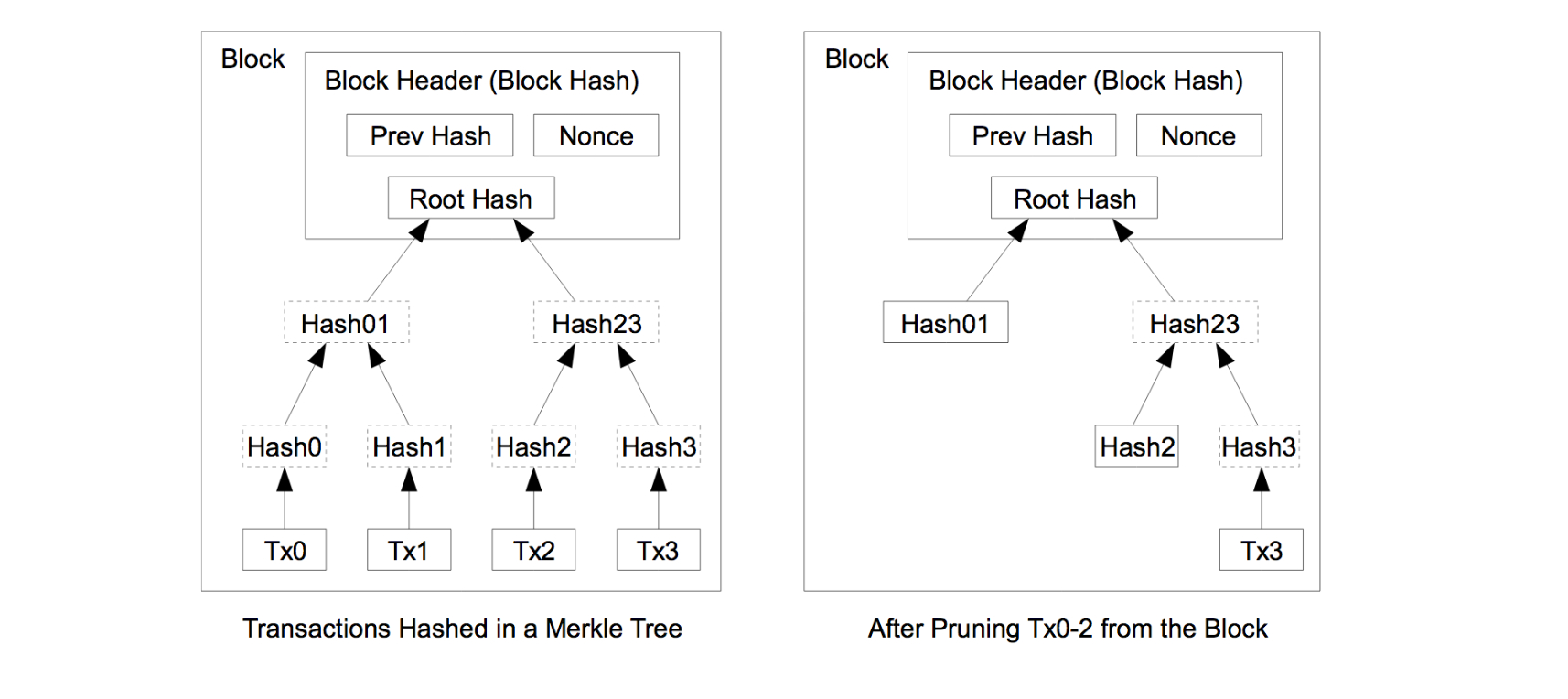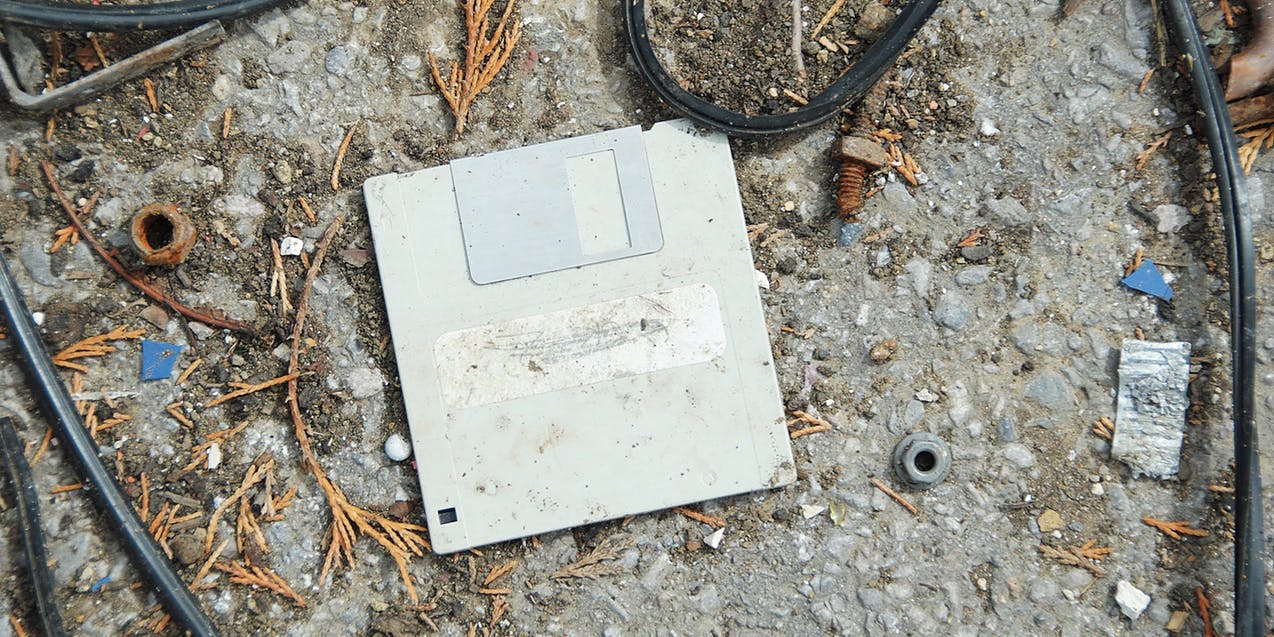Once the latest transaction in a coin is buried under enough blocks, the spent transactions before it can be discarded to save disk space. To facilitate this without breaking the block's hash,transactions are hashed in a Merkle Tree [7][2][5], with only the root included in the block's hash.Old blocks can then be compacted by stubbing off branches of the tree. The interior hashes do not need to be stored.

A block header with no transactions would be about 80 bytes. If we suppose blocks a regenerated every 10 minutes, 80 bytes * 6 * 24 * 365 = 4.2MB per year. With computer systems typically selling with 2GB of RAM as of 2008, and Moore's Law predicting current growth of1.2GB per year, storage should not be a problem even if the block headers must be kept in memory.
References
[2]H. Massias, X.S. Avila, and J.-J. Quisquater, "Design of a secure timestamping service with minimaltrust requirements," In 20th Symposium on Information Theory in the Benelux, May 1999.
[5]S. Haber, W.S. Stornetta, "Secure names for bit-strings," In Proceedings of the 4th ACM Conferenceon Computer and Communications Security, pages 28-35, April 1997.
[7] R.C. Merkle, "Protocols for public key cryptosystems," In Proc. 1980 Symposium on Security andPrivacy, IEEE Computer Society, pages 122-133, April 1980.
